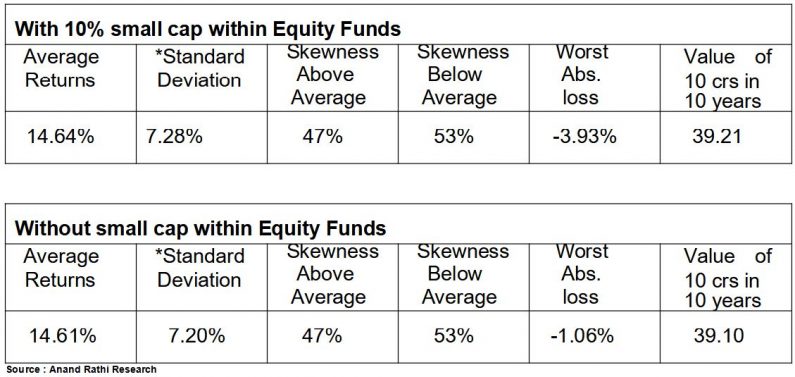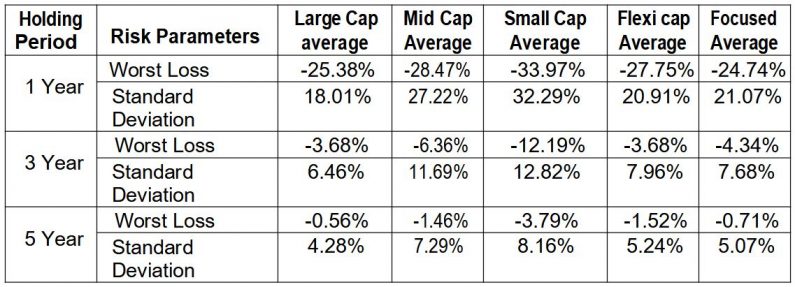Should small cap mutual funds be a part of your portfolio?
- Rishabh Adukia
- Last Updated : October 31, 2021, 11:09 IST

Small-cap stocks are the stocks of publicly traded companies that have a market capitalization of less than Rs. 5,000 crore. Such companies are more volatile and vulnerable to losses during downtime in the market, as they are young and seek to expand aggressively. In a small-cap fund, the fund manager invests a minimum of 65 percent of the portfolio in small-cap stocks. Having said so, small-cap funds are suitable for those who are willing to take high risks and also know when to exit the market which is easier said than done.
New companies that are available at a lower price, small-cap funds usually invest in such companies, as they may be undervalued. As these funds focus on newer concepts and invest in companies that focus on disruptive technologies, they could attain a competitive advantage over rivals acquiring significant market share.
Small-cap funds invest in stocks of companies that have short boom and bust cycles. Hence, these funds are only suitable for aggressive investors who knows when to enter and exit their holdings. Experts say this is the only instance when investors might have to time the markets to maximise their returns. In recent times, small cap funds have gained a lot of attention from investors given that last one year returns of these funds have been substantially higher than large and mid-cap funds. In this article, we evaluate if there is merit to have small cap funds in a portfolio.
1. At a portfolio level, assuming an investor follows an allocation of around 50% Equity Mutual Funds, 30% Structured Products and 20% Debt Mutual Funds, for an average 3 year holding period with a monthly shift from 2001 – 2021, the return and risk parameters would look as below:

* Standard Deviation is calculated for a 3 year rolling return with a monthly shift from Jan’ 2001 – July’ 2021.
As can be seen above, having a 10% small cap exposure within equity funds would mean:
• Similar returns when compared to a portfolio with no small cap.
• Slightly higher standard deviation compared to a portfolio with no small cap.
• High downside risk (worst absolute loss) compared to a portfolio with no small cap. Therefore, there is no merit to have small cap at a portfolio level.
2. Secondly, a comparison of small cap funds to other category of funds for various holding periods between 2011 – 2021, on return and risk parameters looks as below:
Return Comparison

Key Observations:
• Small caps companies because of a low base have a potential to grow at higher return resulting in better performance of small cap funds compared to most other categories.
• However, as can be seen above, this works for midcap companies as well. Over a 3 year and 5 year holding period, the average return of midcap funds is slightly better than small cap funds.
Risk Comparison

* Standard Deviation is calculated for a 1 year, 3 year and 5 year rolling return with a monthly shift from Jan’ 2011 – July’ 2021
Key Observations
• Small cap funds have a higher downside risk (worst loss) compared to other categories across all holding periods
• The standard deviation of small cap funds is the highest and are almost double of large cap funds.
Efficiency Ratio Comparison

Key Observation
• The efficiency (Return per unit of risk) of small cap is the least across all holding periods indicating that the return delivered by small cap funds is not commensurate to the risk taken by these funds.
Conclusion
As can be seen in above return and risk analysis, one may be better off investing in midcaps than small cap mutual funds. However, small cap investing is relatively more fund manager dependent and only if a good fund manager can be identified with consistent track record, one can consider a small cap allocation with an understanding of the higher volatility attached to it.
(The author is a Chartered Accountant and qualified professional advising on wealth management; views expressed are personal)
Download Money9 App for the latest updates on Personal Finance.
Related
- पहली छमाही में रियल एस्टेट में संस्थागत निवेश 37% घटकर तीन अरब डॉलर रहने का अनुमान
- Budget’24: New LTCG rule to hit long-term property owners hard
- Looking to buy gold? Buy now before it’s too late!
- Budget 2024: What is NPS ‘Vatsalya’ scheme? How to apply & other benefits?
- Budget’ 24: Startup ecosystem all smiles with scrapping of angel tax
- Budget’24: New NPS scheme for minors launched, here’s how you can benefit

